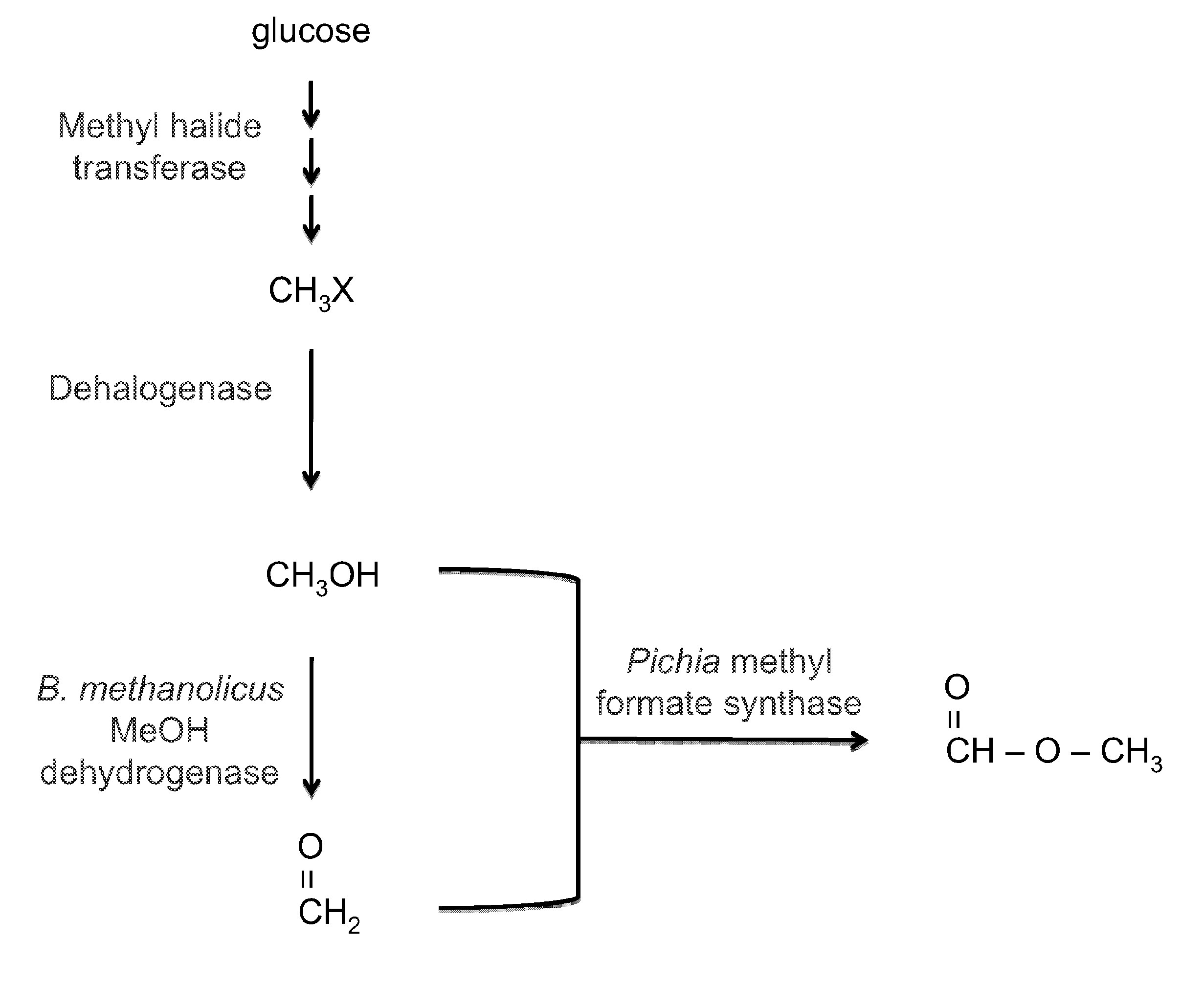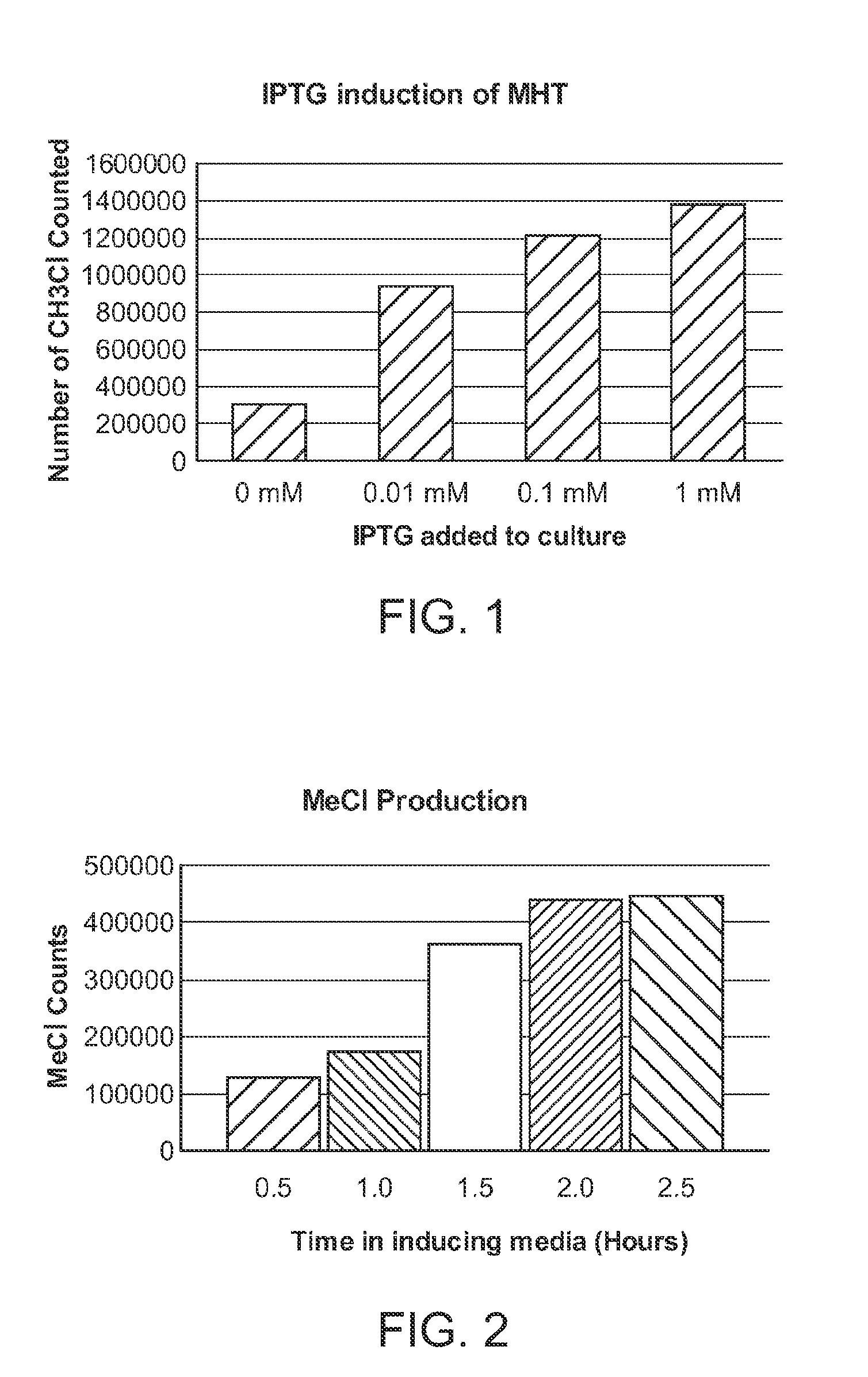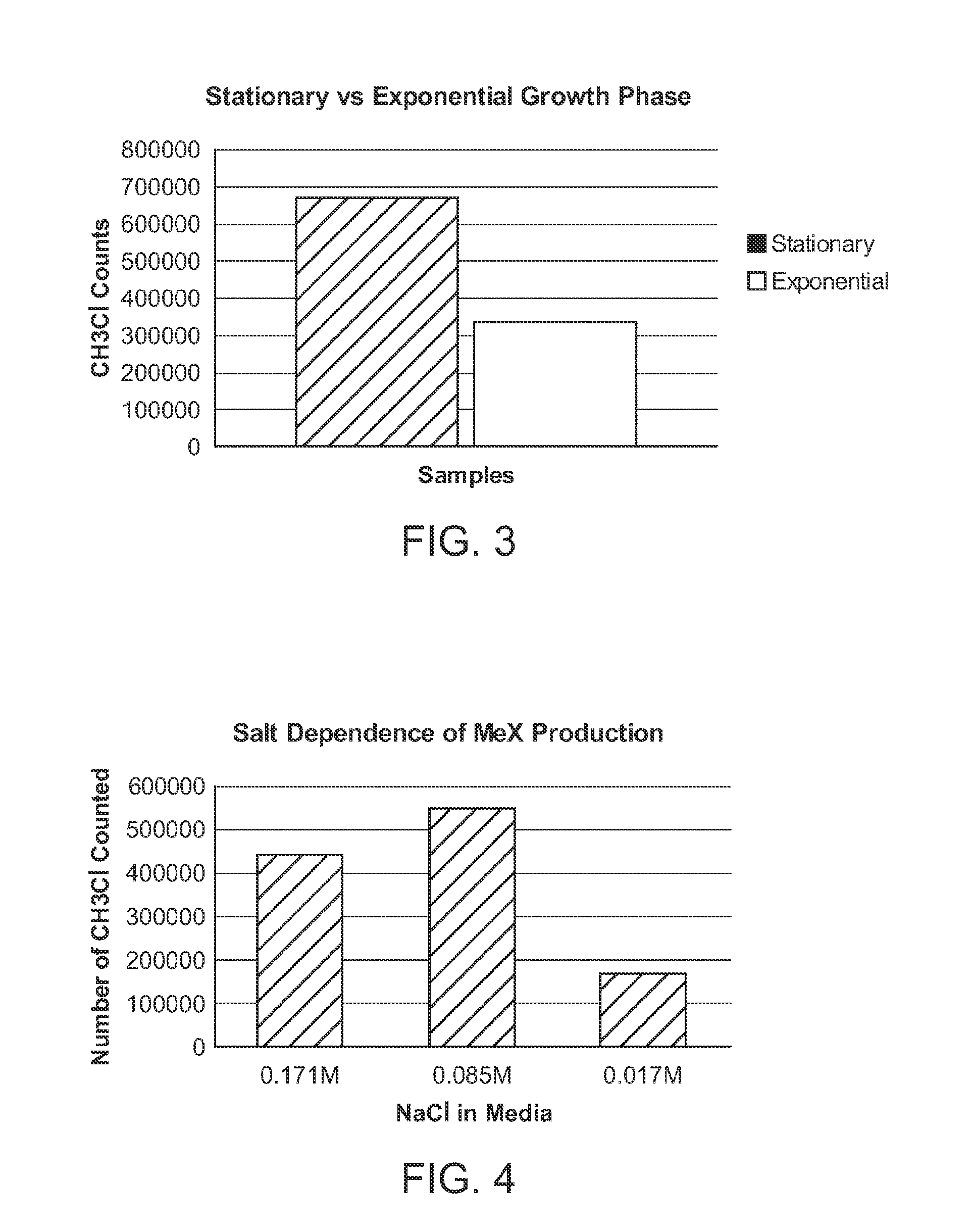Cell-based systems for production of methyl formate
a cell-based system and methyl formate technology, applied in the direction of enzymology, microorganisms, transferases, etc., can solve the problem of high energy consumption and achieve the effect of increasing the production of methyl halid
- Summary
- Abstract
- Description
- Claims
- Application Information
AI Technical Summary
Benefits of technology
Problems solved by technology
Method used
Image
Examples
example 1
Expressing Batis maritima MHT cDNA in E. coli
[0243]Batis Maritima MHT cDNA (Genbank Acc. No. AF109128 or AF084829) was artificially synthesized and cloned into an expression vector pTRC99a.
[0244]The resulting E. colit (strain DH10B) comprising the expression construct encoding Batis maritima MHT under the control of an IPTG inducible promoter is referred to as the “E. coli-MHTBatis” strain.
example 2
Measuring Methyl Halide Production
[0245]Methyl halide production can be measured by gas chromatography. In the experiments described below an Agilent gas chromatography / mass spectrometry (GC / MS) system was used. Most often the “AIR.U” tune file, uses an ionization voltage of 1341. In some experiments an ionization voltage of about 1250 was used. A solvent delay of 0 was set and the scan parameters set to 15-100 MW. The injection port and column were preset to 50° C. The sample to be tested was mixed by shaking for a few seconds. 100 μL of the headspace gas was extracted with a gas-tight syringe. The sample gas was manually injected into the GCMS injection port. The GCMS program was started with the following settings: 1:00 at 50° C.; a ramp of 10° C. per min to 70° C. (the sample typically came off at ˜52° C.); 1:00 at 70° C. The column was then cleaned (ramp to 240° C. for 2 minutes). The sample peak was identified by extracting the GC peak corresponding to 50MW (−0.3, +0.7). This ...
example 3
Methyl Halide Production by Recombinant E. Coli Expressing Batis maritima Methyl Halide Transferase
[0246]E. coli (strains DH10B, BL21, or MC1061) and Salmonella (SL 1344) was transformed with a plasmid encoding a codon-optimized methyl chloride transferase gene MCT from Batis Maritima as described in Example 1. 10 mL of LB media with 1 mM IPTG was inoculated with a single colony of plated cells in a 16 mL culture tube. The tube was then sealed with parafilm and aluminum foil cinched with a rubber band. The cultures were incubated at 37° C. while shaking for 4-22 hours and methyl halide production measured. Each of the strains produced methylchloride.
[0247]In addition, the results were found to be highly reproducible. Repeat tests using 5 different clones of one Batis maritima MHT enzyme in E. coli (strain DH10B) resulted in methyl chloride production in each with a standard deviation of about 12% of the average methyl halide production.
PUM
 Login to View More
Login to View More Abstract
Description
Claims
Application Information
 Login to View More
Login to View More - R&D
- Intellectual Property
- Life Sciences
- Materials
- Tech Scout
- Unparalleled Data Quality
- Higher Quality Content
- 60% Fewer Hallucinations
Browse by: Latest US Patents, China's latest patents, Technical Efficacy Thesaurus, Application Domain, Technology Topic, Popular Technical Reports.
© 2025 PatSnap. All rights reserved.Legal|Privacy policy|Modern Slavery Act Transparency Statement|Sitemap|About US| Contact US: help@patsnap.com



